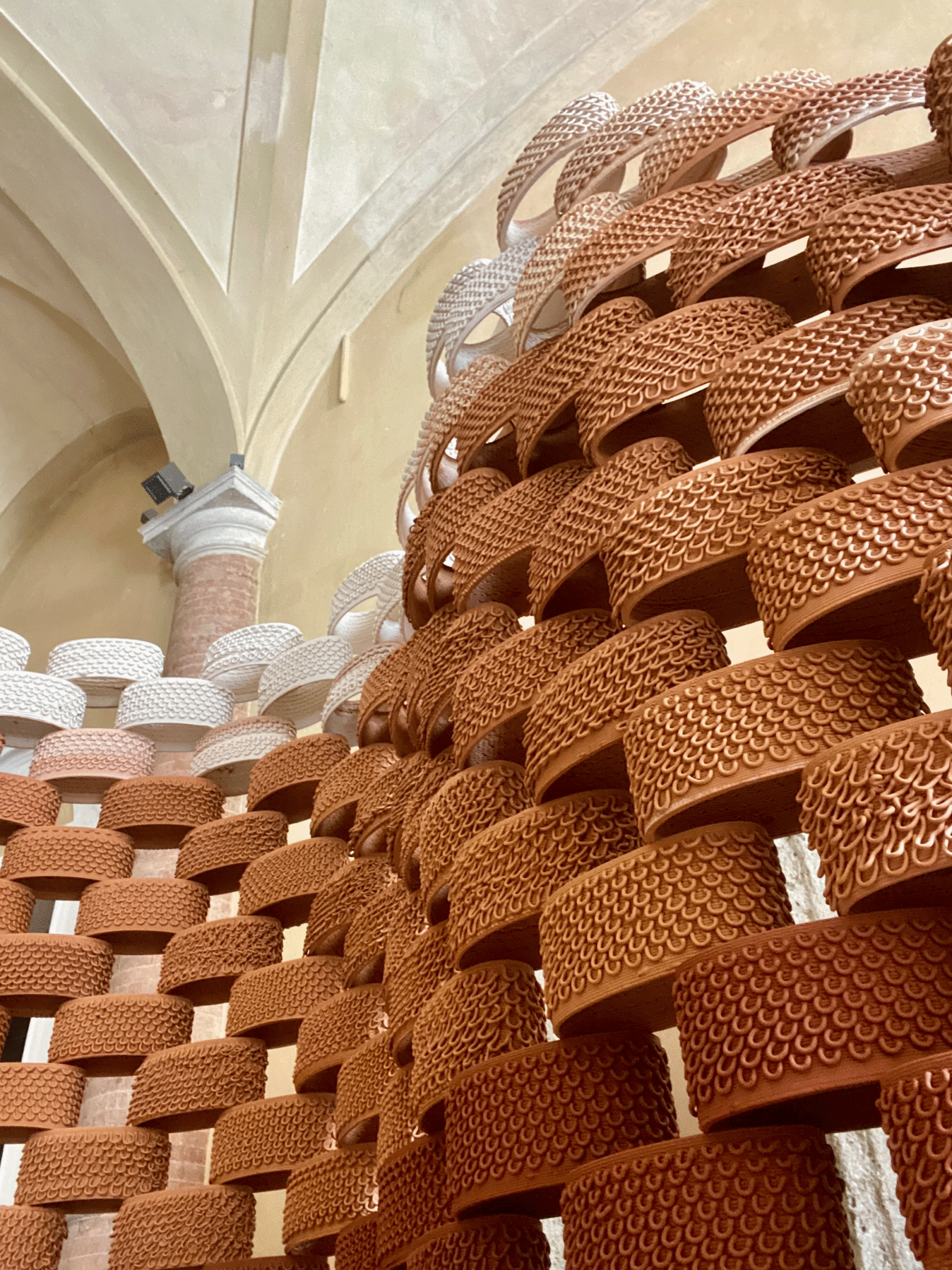The Future Archeologies Project takes place in Faenza, Italy, a town rich in clay deposits, pottery and brick traditions. In this project, new 3D-printed bricks are installed among the ancient column fragments in a local archeology exhibit at ISIA, The Higher Institute for Artistic Industries. The installation highlights both the handmade traditional bricks and the contemporary 3D-printed bricks. The 3D-printed bricks are arranged into both columns and walls and while they are new and cutting edge, they are also curiously at home here, in harmony with the existing architecture of brick columns and vaults in the Palazzo, and its centuries-old architectural elements, but also strangely foreign with their new shape and texture. This new 3D-printed brick assembly is a kind of future archeology or ruin, already a part of something historic but new at the same time.
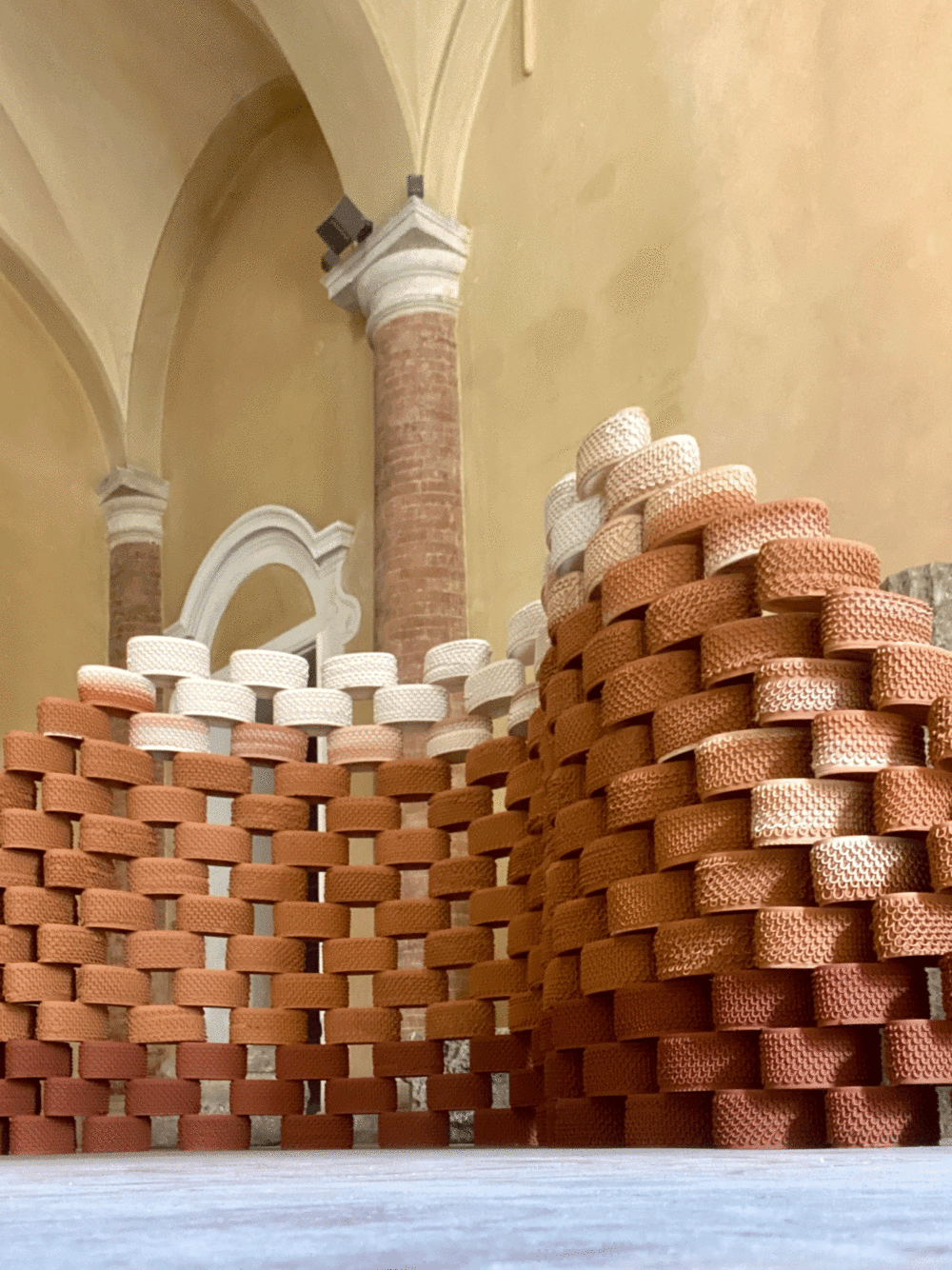

To create the bricks, we are using Potterware, the software application created by Emerging Objects, that allows users to very quickly design ceramic objects for 3D printing. The software uniquely generates richly textured surfaces using waves and loops. For this project, we are creating highly textured bricks, with a textile or basket-like surface, that can be stacked to create sculptural and artistic walls and columns made of the fired local clay. Each brick is engineered and designed to be very simple and strong and printed very quickly.
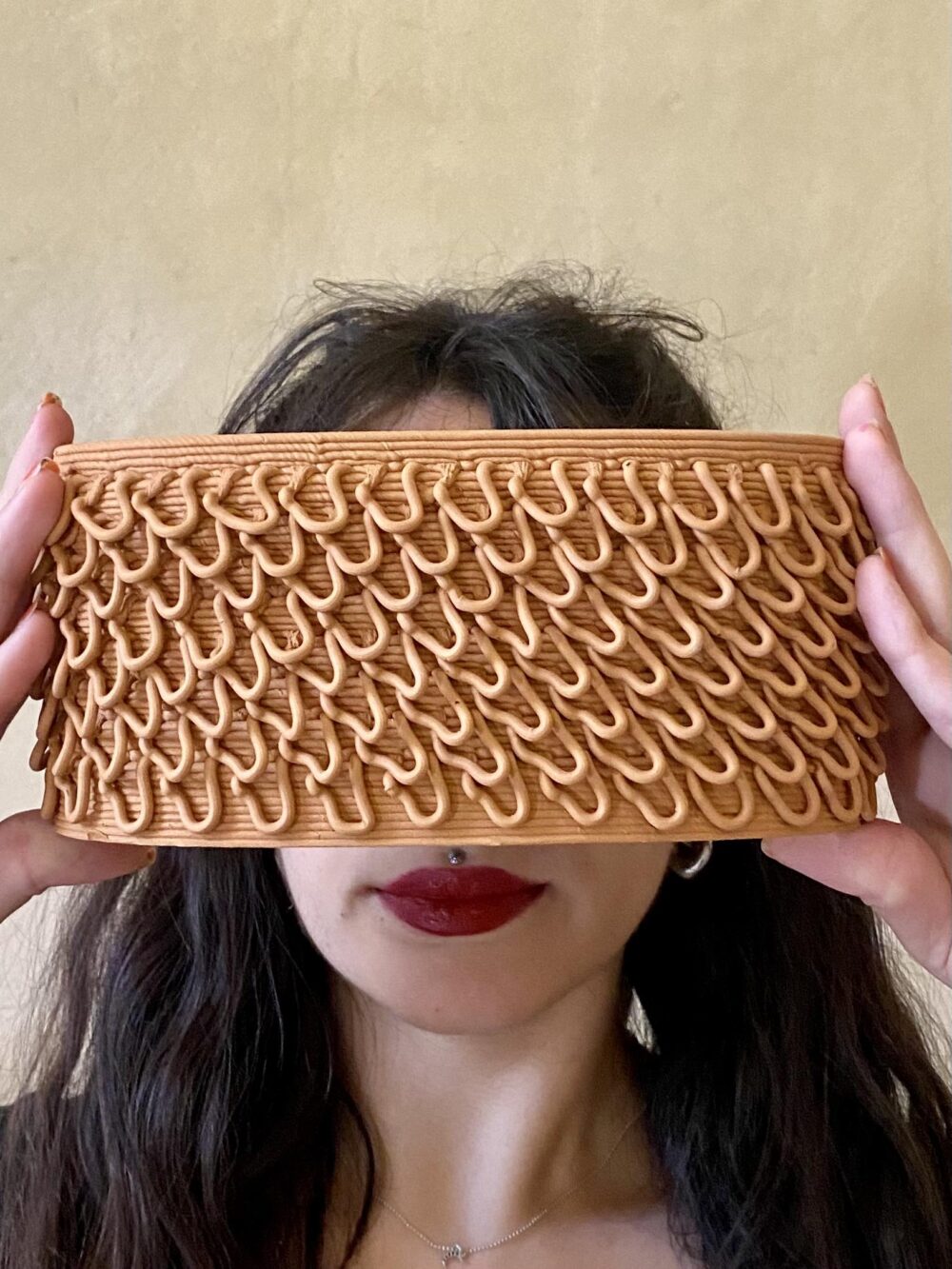
This project takes advantage of local materials, easy-to-use software, and efficiencies in printing and stacking to create beautiful, sinuous and otherwise seemingly complex surfaces and architectural assemblies.
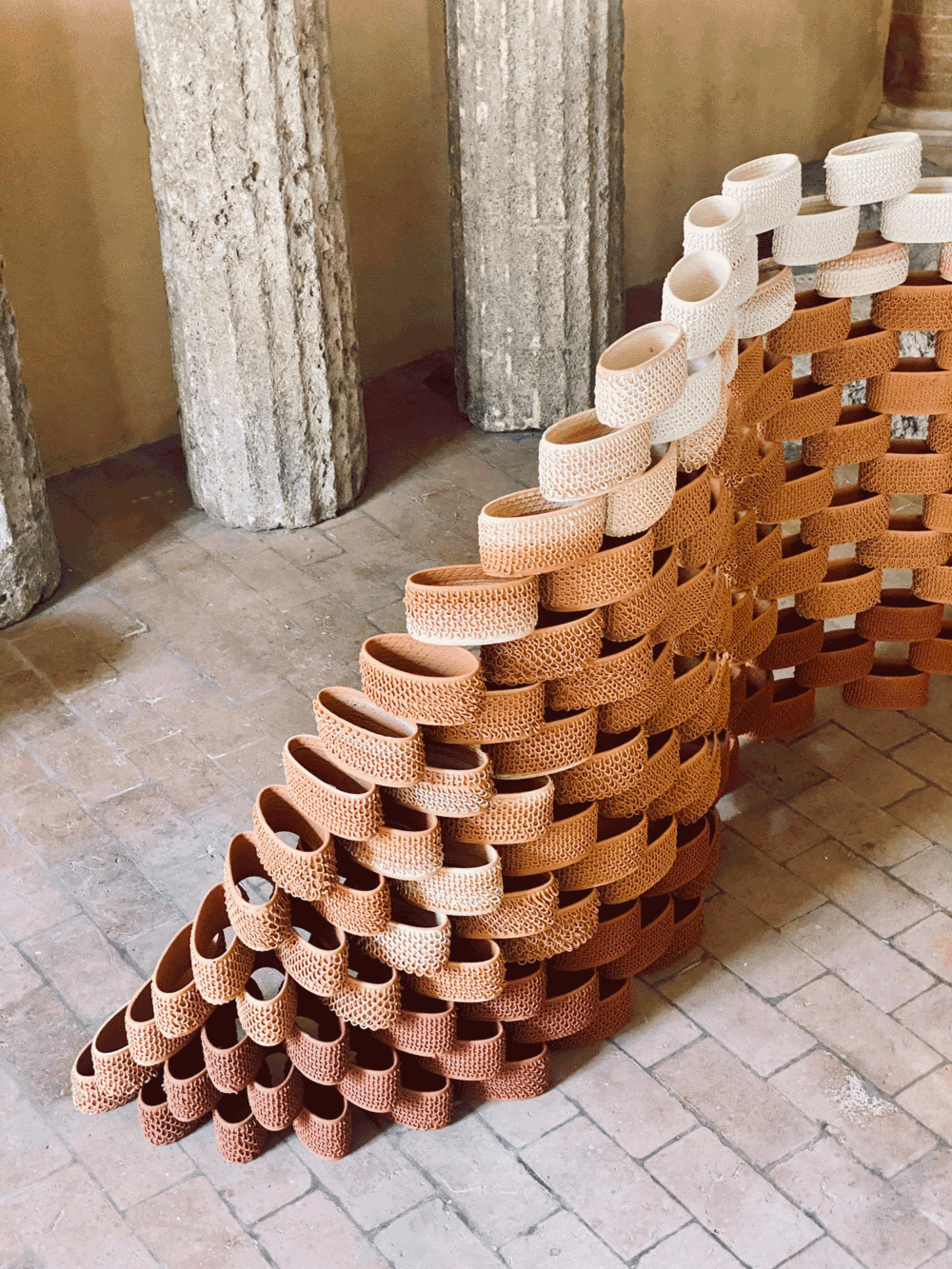
In addition to the walls and columns, 3D-printed ceramic pots, pitchers, and amphorae were also created. They are inspired by the material culture of “basket pottery”.

It has been observed that the first pots were made by plastering the inside or outside of a basket with clay or plaster and then letting the whole thing dry in the sun. The result would have been a strong container useful for storing dry goods like grains or nuts.Putting this plastered basket into a fire would burn the basket off and would produce ceramic vessels which would have “basket or cord like” imprints on the sides. The woven texture in these 3D printed earthenware vessels is a continuum of this tradition, applied using a new technology, logically and beautifully sited within the existing archeology of the exhibit

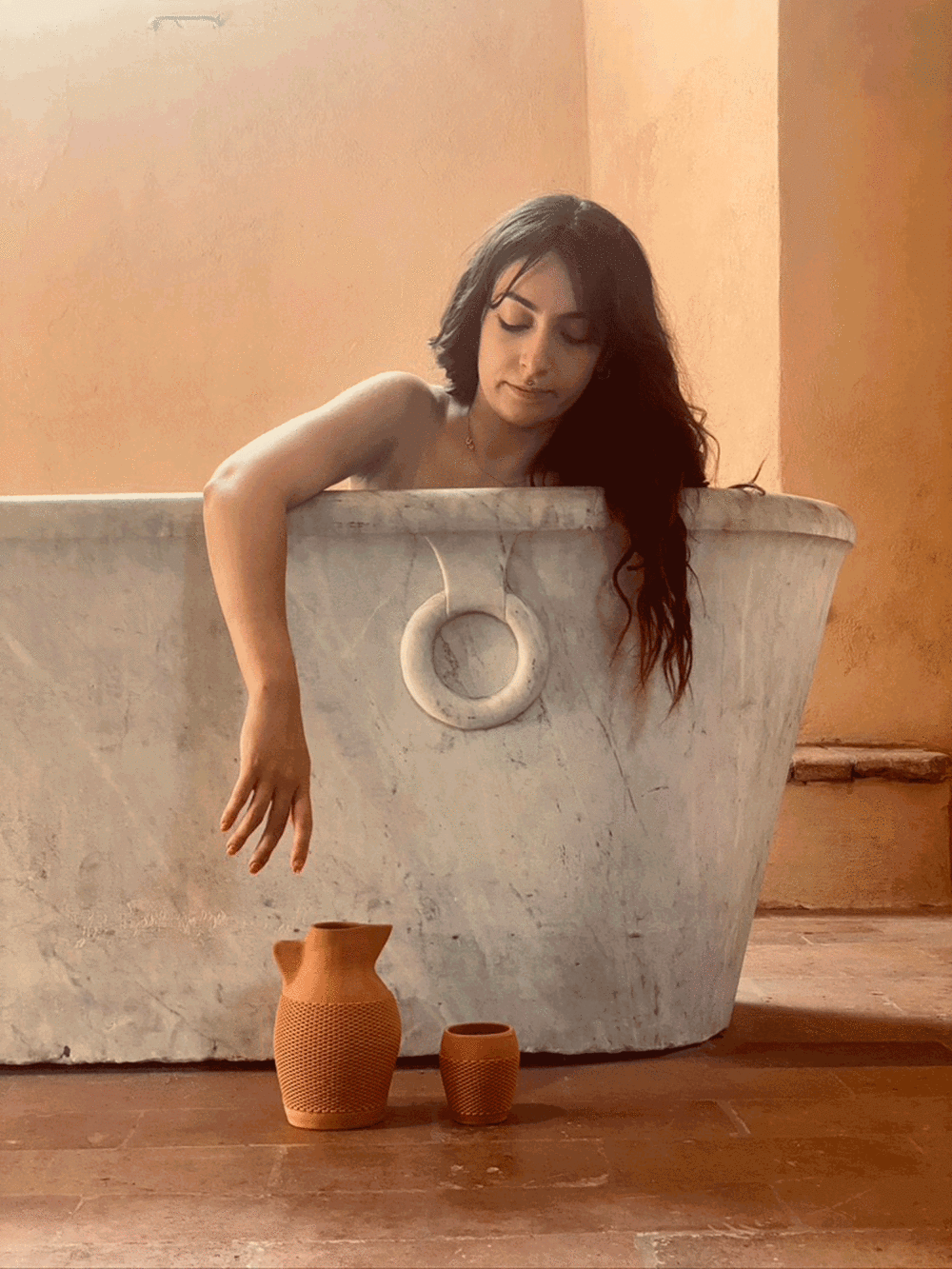
Project Date: 2022
Project Location: Faenza, Italy
Project Team: Virginia San Fratello, Marta Potenza, Frederica Cinque
Special thanks to the Faenza Center for Ceramic Art, San Jose State University, ISIA Faenza, and Mirco Denicolo for supporting this work.
